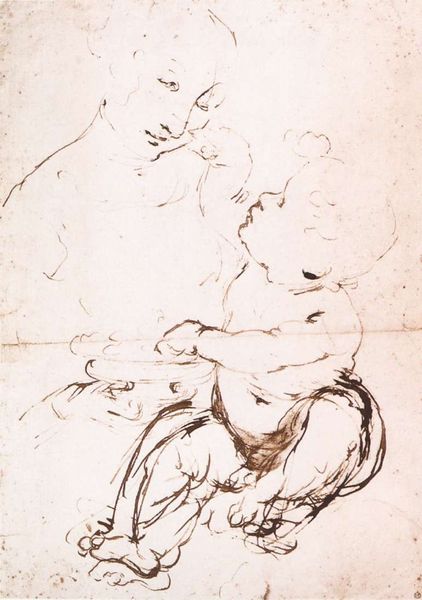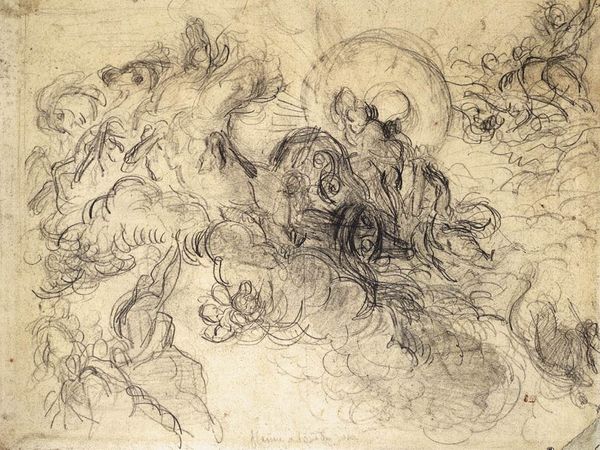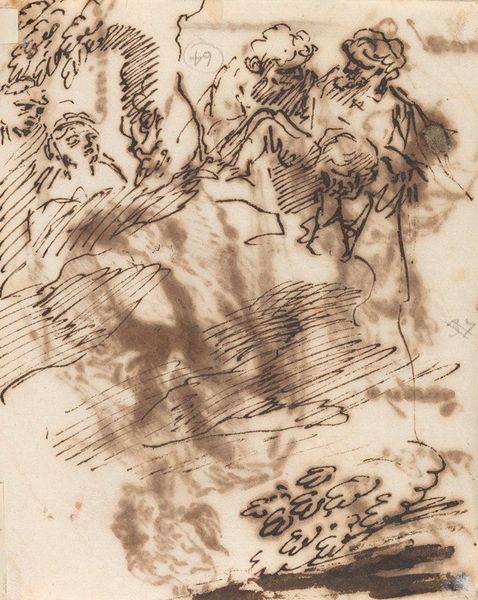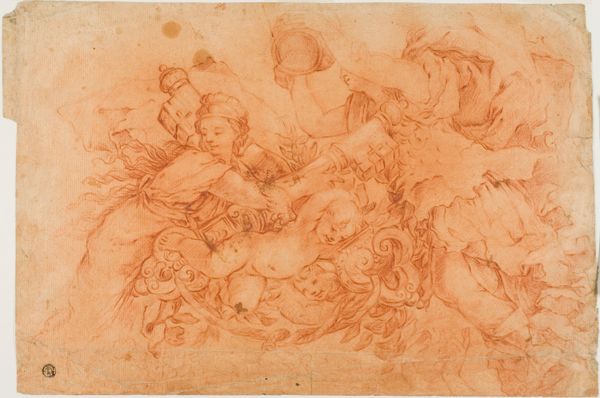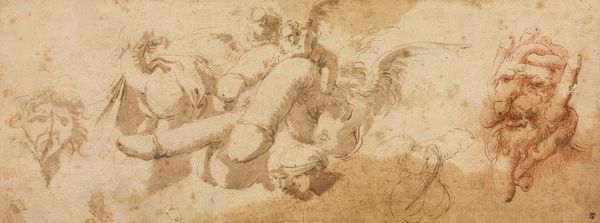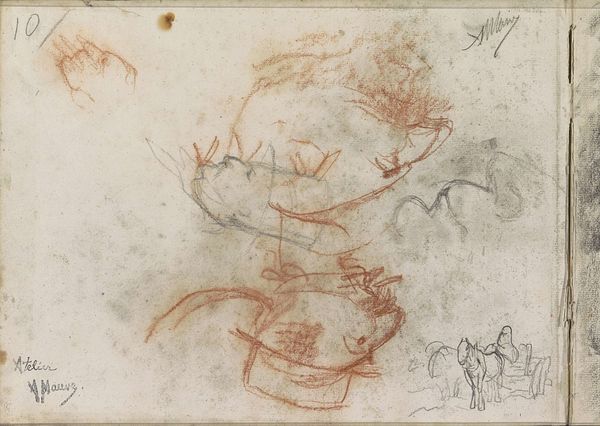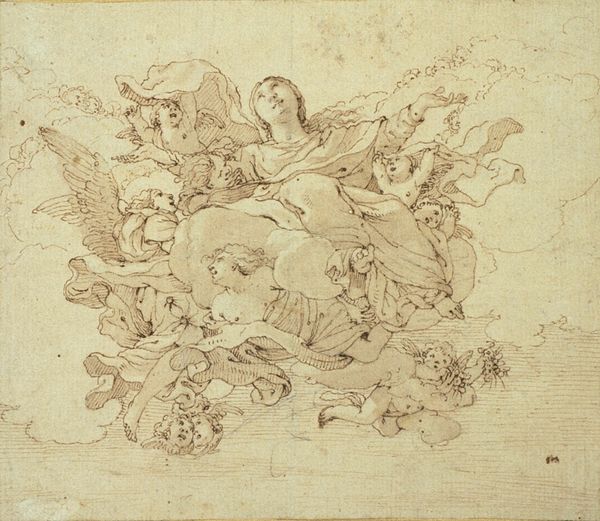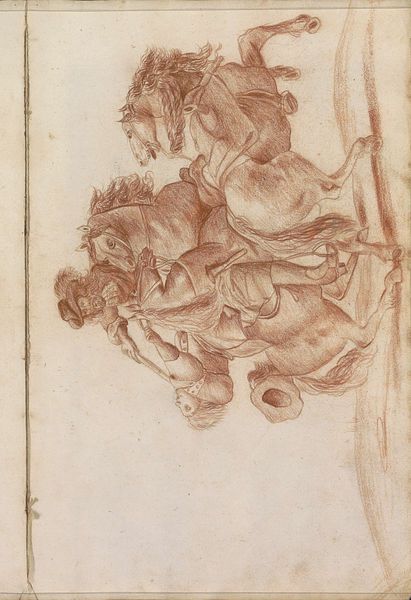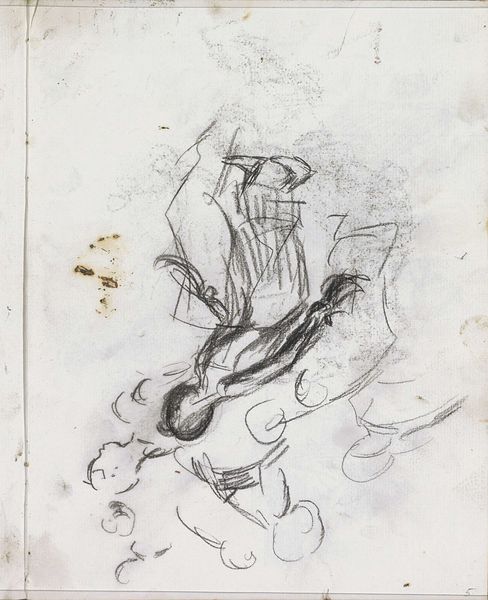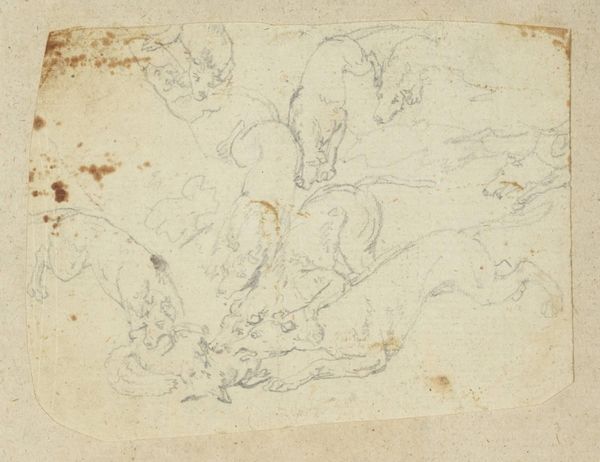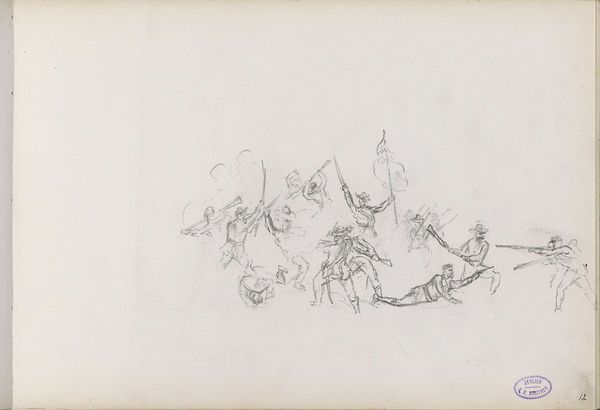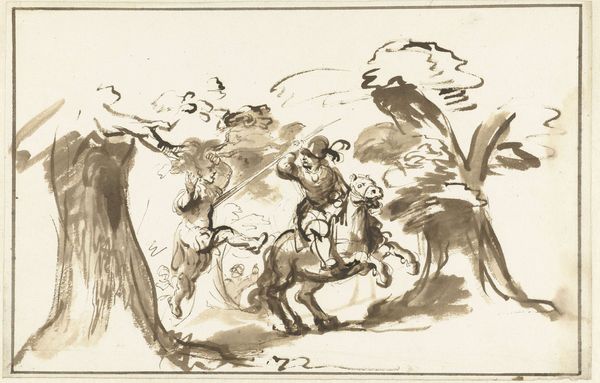
drawing, pencil, graphite
#
drawing
#
war
#
figuration
#
11_renaissance
#
pencil drawing
#
sketch
#
pencil
#
line
#
graphite
#
history-painting
#
italian-renaissance
Dimensions: 16 x 19.7 cm
Copyright: Public domain
Curator: Welcome. Today we are looking at Leonardo da Vinci's "Group of riders in the Battle of Anghiari," a graphite drawing dating back to 1504. Editor: It's immediately striking how chaotic yet powerful it feels, even in its unfinished state. The energy is almost palpable despite the somewhat faded quality. Curator: Indeed. Da Vinci's masterful use of line, particularly in the cross-hatching and implied volumes, brings depth to the entangled bodies of men and horses. Notice the dynamic poses, how each figure seems to propel the next into frenzied motion. Editor: It makes me think about the ways warfare gets romanticized. These drawings capture conflict—supposedly in the name of city-state pride—but at the brutal cost of bodies. The lack of crisp definition almost feels intentional. Is it a comment about war as essentially senseless? Curator: The dynamism undoubtedly points towards the vitality Renaissance artists aimed to capture, an engagement with classical ideals, especially given Da Vinci's commitment to portraying lifelike movement. Consider the contortions and muscular tension; these aren't idealized figures but rather visceral representations pushing at the limits of physicality. Editor: Yet, it's also unsettling when viewed through a more contemporary lens. What exactly were these men fighting for, and who were the casualties lost to the grand sweep of Renaissance history writing? The composition seems to mirror the turbulence of any number of conflicts fueled by patriarchal power structures—power plays where common people became mere fodder. Curator: You raise valid points about whose narratives are highlighted in the grand schemes of historical record-keeping. Even in this quick sketch, Da Vinci is subtly directing our attention to formal, aesthetic achievements like perspective and anatomical accuracy. It's fascinating how the piece offers grounds for both approaches to intersect. Editor: Yes, recognizing that complex push and pull keeps the conversation around historical artwork fresh and urgent, doesn’t it? There's a constant need to look both at the artistic elements, the raw talent of the artist and also at the impact of what those artworks memorialize. Curator: Agreed. It makes engaging with the "Group of riders in the Battle of Anghiari," today especially, quite thought-provoking. Editor: Absolutely, a powerful demonstration of how sketches, even centuries old, can elicit powerful modern reflections.
Comments
No comments
Be the first to comment and join the conversation on the ultimate creative platform.
